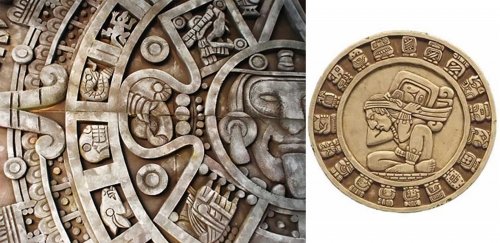Waiting for the End of the World
- News & Events
- News
- Waiting for the End of the World

People have been predicting the end of time almost since the beginning of it. And without exception, they have all been wrong. So why would anyone believe that the world is going to end on Dec. 21, 2012?
This latest prediction is based on an interpretation of the Mayan Calendar, which includes a 5,125-year cycle known as the Long Count that comes to a close on Dec. 21, 2012. But scholars say the date, itself, is no more significant than when our Gregorian calendar ticked over from 1999 to 2000.
The Maya never made the claim that the world would end, said Mary Baker, RIC professor of anthropology. In fact, the Maya actually have three different calendars for keeping track of time. One of these is called the Long Count, which is made up of five cycles of time. The longest of these cycles is the Baktun, and 13 Baktuns make up the Great Cycle of Time.
“Thirteen is a very important number to the Maya,” Baker said. “For example, the inner soul, which resides in the blood, is made up of 13 parts.”
Dec. 21, 2012, is the end of the current Great Cycle of 13 Baktuns, Baker explained. “What happens at the end of a Great Cycle? A new Great Cycle. This is similar to how we think of time. What happens at the end of the year? A new year. What happens at the end of a century? A new century.”
But what about all the other supposed omens that the end of the world is near – including claims of a polar shift, solar activity and a meteor strike?
According to Daniel Snowman, RIC professor of physical sciences, there is no scientific basis for these suppositions. “Meteor impacts are a regular occurrence for our planet; however, there is nothing out of the ordinary expected in the year 2012,” he said.
“As for the sun, it undergoes a natural cycle of activity that results in a peak every 11 years. 2012 is a year in which the sun’s activity is at a near maximum. The only real impact on Earth is a more intense Aurora Borealis in the more northern latitudes, and a more intense Aurora Australis in the southern latitudes,” said Snowman.
“And while the magnetic poles do, in fact, shift, these shifts occur, on average, about every 300,000 years. They are not at all instantaneous. People intrigued by 2012 predictions confuse a flip of the magnetic poles with a flip of the Earth, top-to-bottom. This will not and cannot physically occur,” he said.
Why then the perpetuation of apocalyptic prophesies, even though they have never proven true?
According to Erik Christiansen, RIC assistant professor of history, these prophecies are commonly associated with religious movements or great social upheavals.
He cited Fundamentalist Christians who believe in the Rapture – when “the dead in Christ” and those “who are alive and remain will be caught up in the clouds” to forever “be with the Lord,” as written in the King James Bible. He also cited the Native American Ghost Dance, a religious movement that, if practiced, will one day reunite the living with the spirits of the dead and bring peace, prosperity and unity to Native peoples throughout the region.
“When social change is unwelcome, some people find meaning in embracing the idea that the whole world must be coming to an end. It’s a comforting notion, as it not only explains why bad things are happening but also points to an easy solution to every problem.”
That may explain why people have been predicting the end of time almost since time began. But is there ever really a beginning or end of time? Baker offers the quantum physics answer:
“Time is a human construct,” said Baker. “It doesn't really exist, except as we humans experience it. When does a cycle of time begin or end? Never, really. It only exists in our cultural agreement about time and its units.”
So, if there is no time, then there is no end of time. Now, that’s worth pondering.
